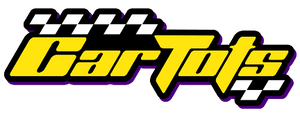Growth and Development Of A Child
The concepts of growth and development are a fundamental part of the life process of the human being. It is important to differentiate both concepts but taking into account that both occur simultaneously and impact one another.
Growth is defined as the increase in the size of the body, which represents a variation of the anthropometric measures such as weight and height. Development, on the other hand, is the appearance of new characteristics or the acquisition of new motor, social, effective and language skills.
Although the rhythm of growth and development is from child to child, there is an order that allows it to be evaluated. There are stages of growth and development that occur in orderly succession, with some temporary variation. Therefore, more important than comparing the development between one child and another, it is better to individually appreciate the curve of growth and development and its harmony.
On the other hand, although this process exists throughout the individual's life, there is no doubt that it is precisely in the period between conception and the first year of life that a true explosion of growth and development takes place. In no other stage of life will it grow back with such an accelerated pace as in the first year of life.
In the same way these months will be fundamental to define the final result of the individual with the achievement of all their physical and mental potentialities.
It should also be noted that this period of rapid growth makes the babies and toddlers more vulnerable and alterations that may appear, if not detected and corrected, can cause disorders that remain and accentuate over time. This explains the importance of regular controls, both during pregnancy and during the first year of life.
Differences Between Growth and Development in Humans
Growth
- It allows the evaluation of the somatic aspect, it is a quantitative process.
- It is a process that culminates between 20 and 22 years.
- It involves processes of hypertrophy and cellular hyperplasia.
- It occurs at a constant speed.
- Refers to the change in size, determined by somatic factors (such as size and weight).
Development
- It allows the evaluation of the morphological and functional aspect
- It is a qualitative process
- Constant process that continues its course until death.
- Involves phenomena of maturation, differentiation and integration of functions.
- It occurs from the simplest to the most complex.
Development characteristics
The development of the child will depend on the maturation of the nervous system in interaction with its environment. Numerous factors can intervene in the process of their achievements. Each child is different, but a series of general principles govern the process of development throughout childhood:
- Development is a continuous process, from conception to maturity
- Each child is unique.
- The psychomotor, sensory and cognitive development depends basically on the maturation of the nervous system.
- The sequence of development is the same in all children, but their time of appearance varies from one to the other.
- Generalized responses are gradually replaced by specific individual responses.
Principles of Development
Cephalo-caudal principle: the development goes from the head to the feet. First develop the muscles that are close to the head, then the lower extremities.
Near-distal principle: the muscles that are closest to the spinal column and then the muscles that are farthest from the spinal column develop first. These principles can help us to develop a certain musculature, for example if we want a child to learn to walk, first he has to learn to sit down.
Motor Development:
It is divided into the gross motor origin that implies the development of control and increase of force in the cephalo-caudal direction. This means that the muscles of the neck first appear, then the trunk and finally the legs. This is seen in the fact that the first thing that appears is the support of the head, then controls the trunk, sits, crawls and finally at the end of the first year takes its first steps.
Fine motor or hand control also has a well-defined sequence. At birth he keeps his hands preferably wielded and there is a reflex grasp. Then it begins to open releasing the thumb. Afterwards, he begins to have voluntary grasp, initially with all the fingers and then developing the clamp with the thumb and the index finger. In this development, adequate vision (eye-hand coordination) and stimulation that encourages you to pick up objects is very important
Social Development:
The child at birth depends absolutely on the adults around him, especially his parents, will learn to trust and love according to how they respond to their needs.
Towards the second month of life develops a social smile. Every time someone approaches, the baby looks at him with interest and smiles. Of course this is accentuated if it is their parents, which becomes more noticeable from the third month.
Around the eighth month he ignores strangers and cries in a new or annoying situation.
After a year, he becomes interested in games and begins to develop greater social interaction.
Breastfeeding has been seen as an element that facilitates an adequate social and emotional development by favoring the mother-child bond.
Cognitive-linguistic Development:
At birth the child has visual capacity and has a preference for the human face. They can imitate gestures like opening their mouths. A one-month-old baby should follow his gaze if he is in a calm state of alert. At 6 months they already have a very developed vision.
They have good hearing at birth and react to sounds and especially the voice of their mother.
The language begins with small vocalizations per month. After three months consonants are added and around six months there are two-syllable words. At the age of one, he says two or three words.
Written by Dr. Hellyher
